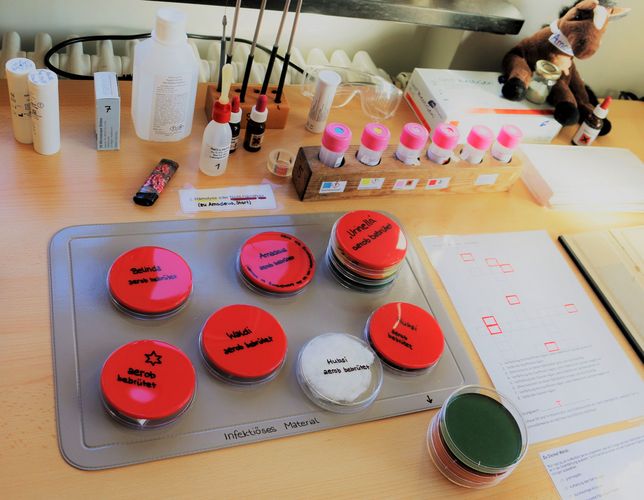At first it just sounded like a bizarre idea: a microbiological escape room for students. In their project work at the Institute of Bacteriology and Mycology, the prospective veterinarians Sophia Meyer and Theresa Feitenhansl proved that they can put their original idea into practice with a lot of creativity. In cooperation with the Centre for Applied Training and Learning (PAUL), the two students have designed a room in which veterinary medicine students can playfully work through and solve six clinical case studies using various microbiological examination techniques. On the one hand, there is Waldemar the hunter, who visits the veterinary practice because his dachshund Waldi has been showing skin changes for a few days. Or the Hubert family whose Labrador Hubsi has a cold. In order to identify the pathogens of the six "patients", a microbiological examination must be initiated. Based on the preliminary report, the students have to decide which bacteriological or mycological examinations should be carried out. First, the pathogen is examined macroscopically on a culture medium and a Gram stain is analysed. If the students are correct in their decision, they find a clue that leads them to the next station and finally to the goal - a specific bacteriological diagnosis or suspected diagnosis as the basis for a targeted therapy. It takes about 30 minutes to work through a case study. Prof. Baums, head of the Institute of Bacteriology and Mycology, was able to convince the students with her project work.
This Escape Room is intended to introduce veterinary medicine students to the subject of bacteriology and mycology in a playful way and to help them prepare for exams. Of course, all the cultures and "incubated" culture media are only props. So don't be afraid to try things out and make a diagnosis!
